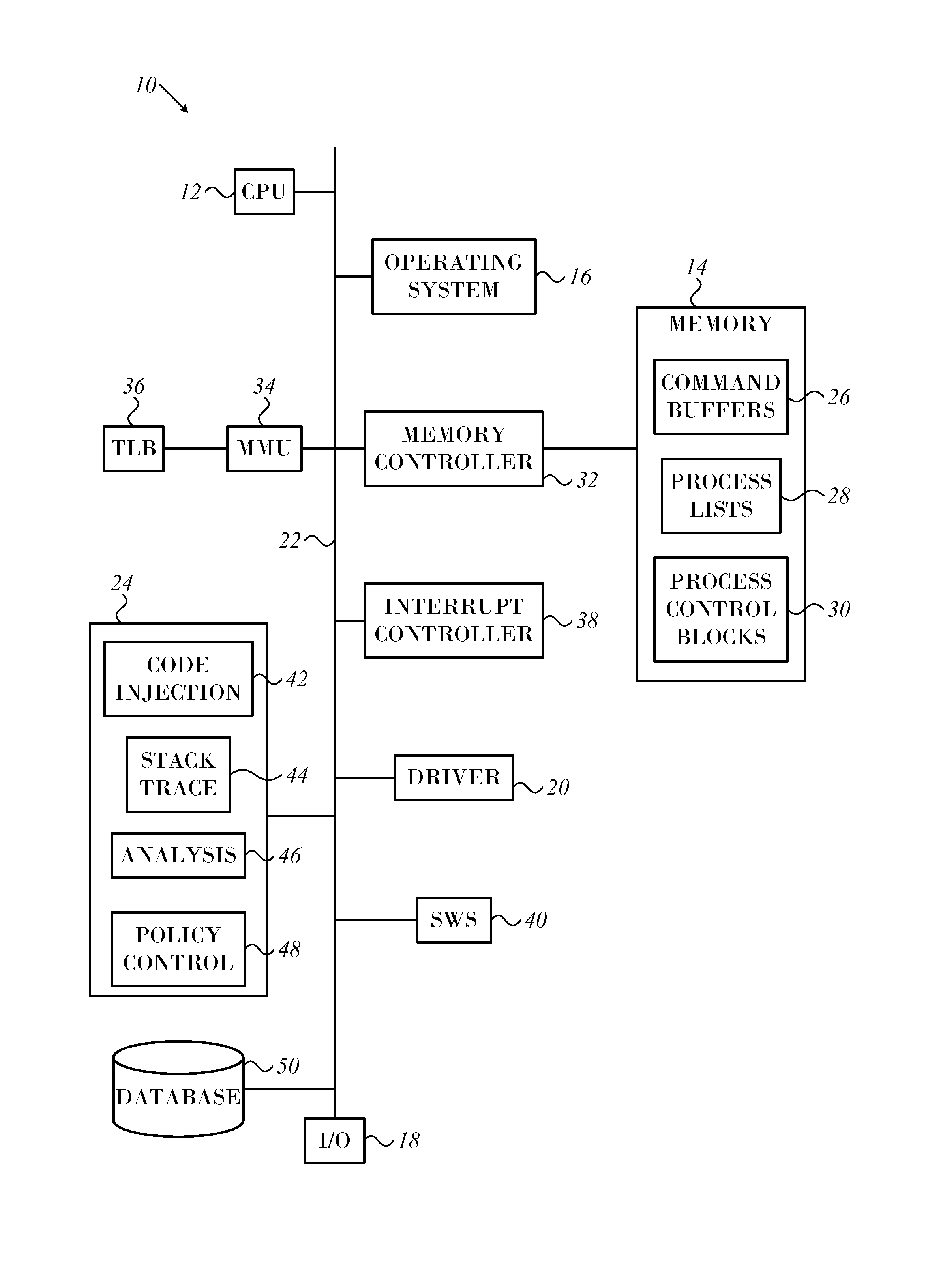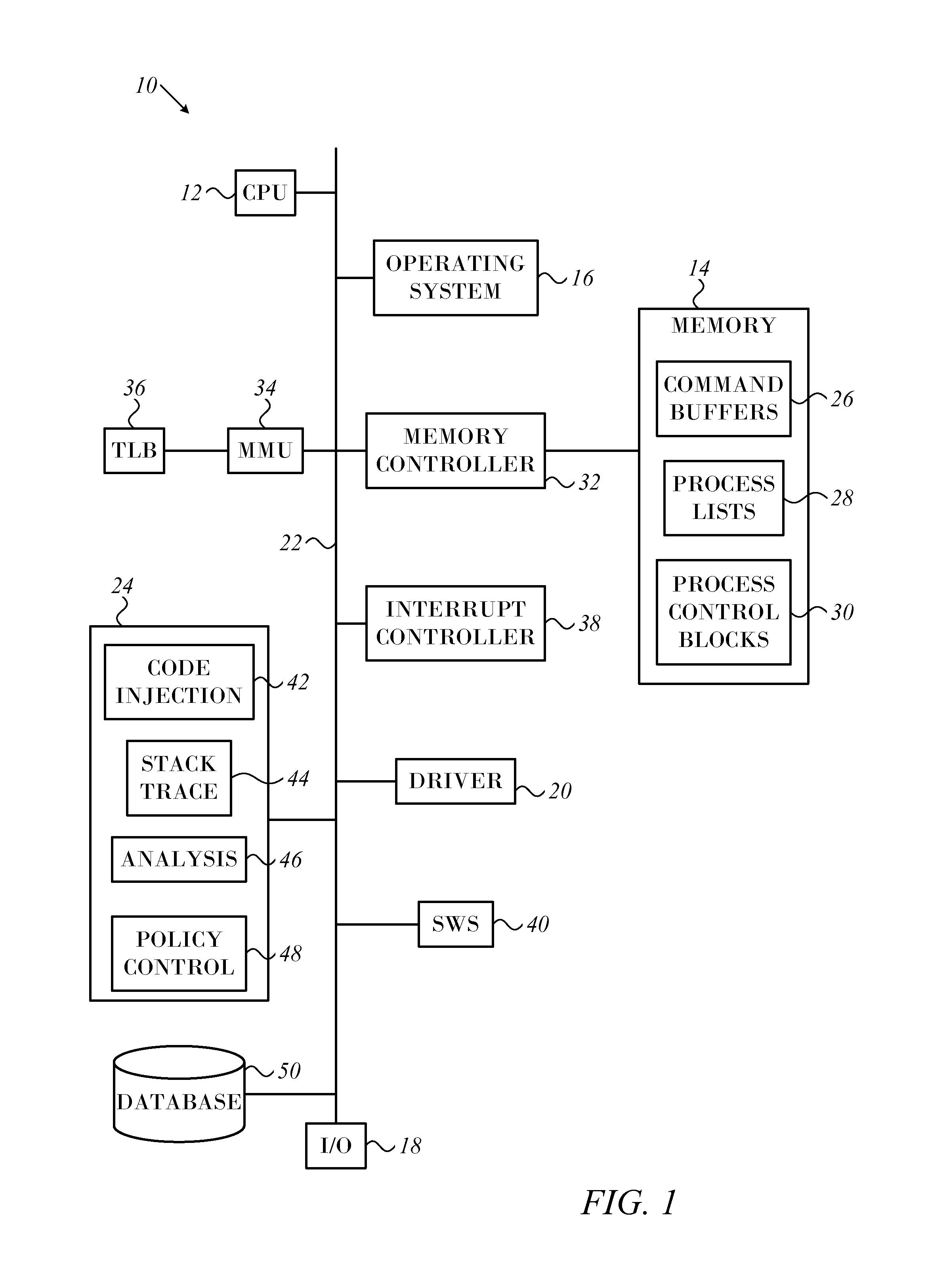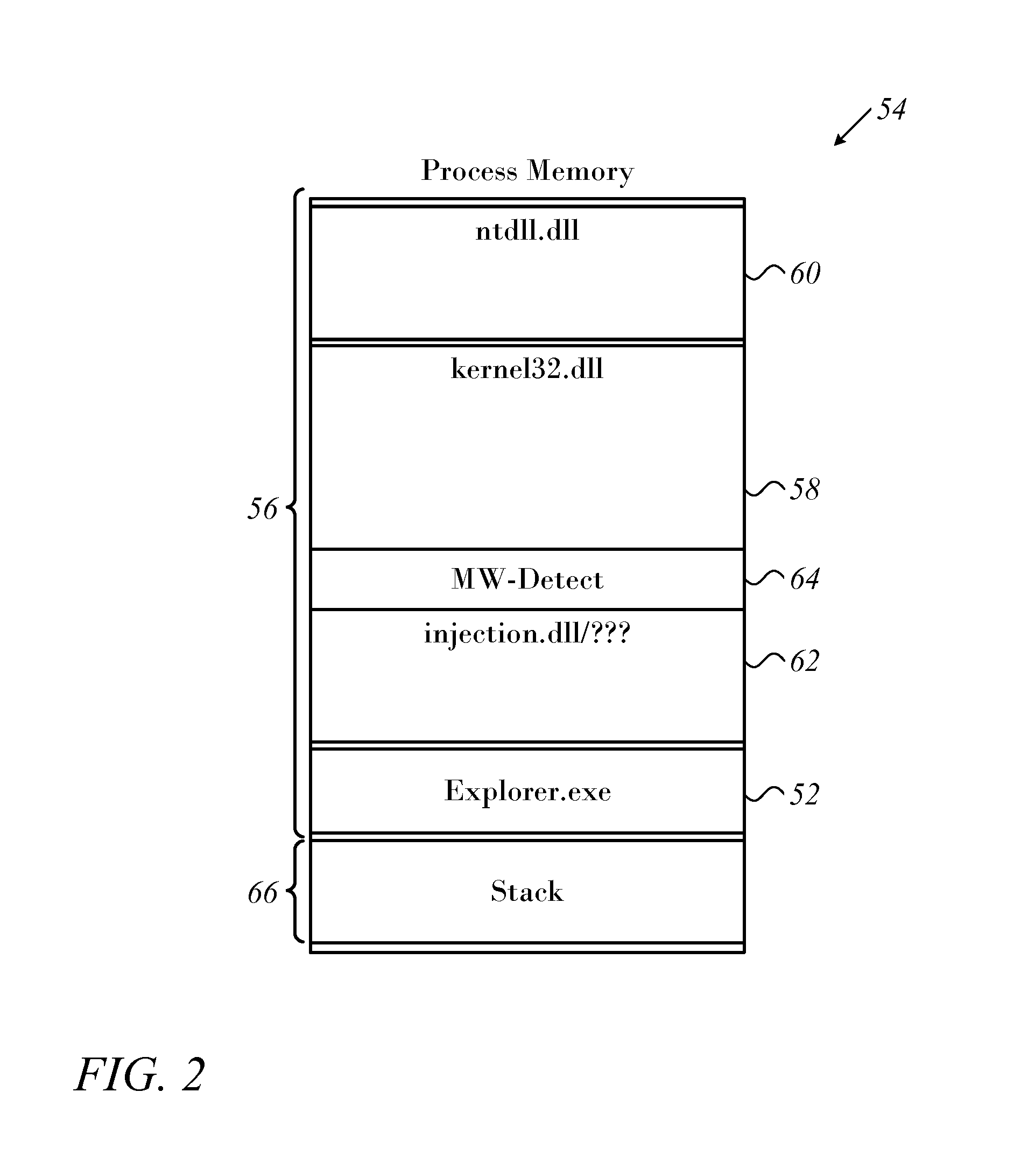Mitigating malware code injections using stack unwinding
a stack unwinding and malware technology, applied in the field of computer security, can solve the problems of malware inflicting damage and none of these have been completely successful, and achieve the effect of preventing destructive behavior and being less vulnerable to disruption
- Summary
- Abstract
- Description
- Claims
- Application Information
AI Technical Summary
Benefits of technology
Problems solved by technology
Method used
Image
Examples
first embodiment
[0043]Reference is now made to FIG. 2, which is a diagram illustrating a layout of user-level process memory in a system affected by malware that is processed in accordance with an embodiment of the invention. Explorer.exe 52 is a typical module, which runs within its own exclusive virtual address space 54. The virtual address space typically comprises several types of content:
[0044]A segment 56 contains executable code. This part of the virtual address space contains machine code instructions to be executed by the processor, such as dynamically linked system libraries 58, 60 (kernel32.dll and ntdll.dll). Such library code is often write protected and shared among processes. It will be noted that the segment 56 contains malware in the form of injected code 62. Another segment comprises malware detection code 64 (MW-DETECT), which has been instantiated in the address space 54 and is explained in further detail hereinbelow.
[0045]A stack 66 is used by the process for storing items such...
second embodiment
[0051]In the previous embodiment, the hook was implemented in user application memory. A more secure approach is to place callback function code in kernel memory and register the callback function with the operating system with respect to an event that needs to be examined. Upon triggering of such an event the kernel will execute the callback function registered for that event, and may produce a notification of the event and / or a notification of the execution of the callback function. This approach eliminates the need for a hook.
[0052]Alternatively, hooks to a system call can be instantiated directly into the kernel; however this requires the kernel to permit kernel memory modifications, and not all kernels extend such permissions.
[0053]Reference is now made to FIG. 4, which is a diagram illustrating a layout of user-level process memory that is processed in accordance with an alternate embodiment of the invention. The layout of process memory 94 and the sequence of function invocat...
example
[0088]This example illustrates detection and analysis of the creation of a new process. Reference is now made to FIG. 7, which is a table illustrating a stack trace prepared using the 64-bit version of the Windows operating system and which is evaluated in accordance with an embodiment of the invention. In the table some of the arguments have been omitted for clarity. The right column has the syntax:
module name ! function name”.
Entries in the right column containing the notation “::” indicate the syntax:
“class::function (method)”.
[0089]Exact function names are used. The symbol information is readily available for Windows system DLL (dynamic linked library) files, some of which appear in the presented trace. In the case of the 64-bit version of Windows, information about how to unwind the stack is saved in the 64-bit executable file itself as part of the file format.
[0090]The bottom line 140 of the table presents the first function that was called, RtlUserThreadStart, which is in the...
PUM
 Login to View More
Login to View More Abstract
Description
Claims
Application Information
 Login to View More
Login to View More - R&D
- Intellectual Property
- Life Sciences
- Materials
- Tech Scout
- Unparalleled Data Quality
- Higher Quality Content
- 60% Fewer Hallucinations
Browse by: Latest US Patents, China's latest patents, Technical Efficacy Thesaurus, Application Domain, Technology Topic, Popular Technical Reports.
© 2025 PatSnap. All rights reserved.Legal|Privacy policy|Modern Slavery Act Transparency Statement|Sitemap|About US| Contact US: help@patsnap.com



